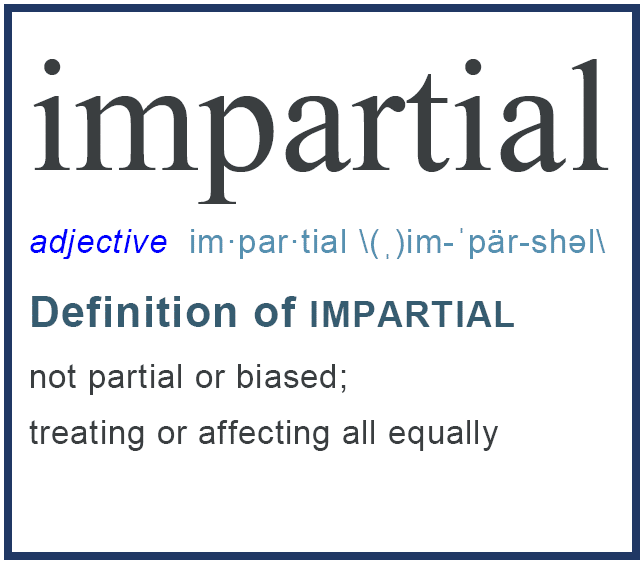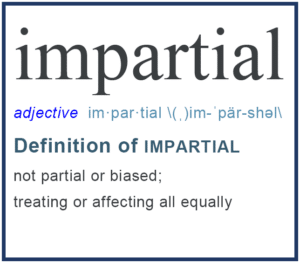


Valuations: A Cautionary Tale
By: Joshua Levin-Epstein, Esq.
Levin-Epstein & Associates, P.C.
Email: Joshua@levinepstein.com
A recent decision from a Minnesota federal court in a contested valuation proceeding that rejected both of the experts’ valuation reports of a successful grocery store business shows the danger of the incorporation of client advocacy and bias into a valuation report.
The Minnesota federal court, in Lund v Lund, Decision, Order & Judgment, No. 27-CV-14-20058 [Minn. Dist. Ct. Hennepin Cnty. June 2, 2017], basically concluded that both of the valuation experts were hired guns. In Lund, the Court explained that:
“Both experts are highly trained and experienced professionals. Both have testified and provided valuation reports in many trials and contested valuation situations. While the Court finds that [the parties’ respective valuation experts] are unquestionably qualified to testify on the issue of valuation, the obvious, zealous advocacy in which they engaged on behalf of their respective clients compromised their reliability in this instance.”
The Court went onto further criticize both of the valuation experts:
“Looking at their contention at a high level, it is abundantly clear that their valuations are tailored to suit the party who is paying them. This cold fact cuts against both experts’ credibility in equal measure.”
While both experts used an income approach on a discounted cash flow analysis to value the business, their disagreement over every input and assumption contemplated in their discounted cash flow analysis calculation compromised the professional integrity of each report, according to the Court. The Court concluded that the $100 million difference in the value of the business between the experts’ reports was attributable to client bias.
Valuation experts are often under immense pressure in valuation proceedings to deliver reports in line with client expectations; however, the inclination to satisfy the client cannot compromise professional objectivity. Ultimately, valuation reports that are perceived by a court as contrived will backfire against the client and the expert because the courts are empowered to undertake an independent judgment in a contested valuation proceeding. For experts whose professional livelihood depends on credibility, the Minnesota federal courts’ decision should serve as a cautionary tale.
Editor’s Note: At JBV, remaining neutral is a prime objective.

Guidance for North-South Spinoffs
Guest Author Lou Vlahos, Esq, Partner, Farrell Fritz, P.C.
The IRS continues to issue guidance in the much debated  area of corporate spinoffs. A recently published ruling examined the federal income tax treatment of the two steps that comprise a so-called “north-south” transaction. In doing so, it provides taxpayers with some welcome certainty.
area of corporate spinoffs. A recently published ruling examined the federal income tax treatment of the two steps that comprise a so-called “north-south” transaction. In doing so, it provides taxpayers with some welcome certainty.
A “north-south” transaction is one in which a parent corporation (P) contributes property constituting an active trade or business to its wholly-owned first-tier subsidiary corporation (D) for the purpose of enabling D to satisfy the requirements for a “tax-free spinoff” within the meaning of the Code. Then, pursuant to the same overall plan, and for a bona fide business purpose, D immediately distributes the stock of its own wholly-owned corporate subsidiary (C) to P.
The IRS considered whether the contribution and distribution that comprise a north-south transaction should be treated as two separate transactions for federal income tax purposes.
The Transaction
P owns all the stock of D, which owns all the stock of C. The fair market value (“FMV”) of the C stock is $100X. P has been engaged in Business A for more than 5 years, and C has been engaged in Business B for more than 5 years. Business A and Business B each constitutes the “active conduct of a trade or business” within the meaning of the Code’s spinoff rules. D is not engaged in the active conduct of a trade or business directly or through any subsidiary other than C.
On Date 1, P transfers the property and activities constituting Business A, having a fair market value of $25X, to D in exchange for additional shares of D stock. On Date 2, pursuant to a dividend declaration, D transfers all the C stock to P for a valid corporate business purpose. D retains the Business A property and continues the active conduct of Business A after the distribution. The purpose of P‘s transfer of the property and activities of Business A to D is to allow D to satisfy the active trade or business requirement for a “tax-free” spinoff.
The Law
A distribution that is treated, for tax purposes, as a dividend made by a corporation to a shareholder with respect to its stock, is includible in the gross income of the shareholder. The portion of the distribution that is not a dividend – i.e., the amount that exceeds the distributing corporation’s accumulated and current earnings and profits – is applied against and reduces the shareholder’s adjusted basis for the stock. The remaining portion of the distribution, in excess of the adjusted basis of the stock, is treated as gain from the sale or exchange of property by the shareholder.
If a corporation distributes appreciated property (rather than cash) to a shareholder in a distribution that is treated as a dividend, the distributing corporation recognizes gain as if it had sold the property to the shareholder at its FMV.
Spinoff
However, if certain requirements are met, a corporation may distribute all of the stock of a controlled corporation to its shareholders without recognition of gain or income, either to the corporation or to the recipient shareholders. In order for a distribution to qualify for this nonrecognition treatment, the distributing corporation must distribute stock of a corporation that it controls immediately before the distribution. In addition, the distributing corporation and the controlled corporation each must be engaged in the active conduct of a trade or business immediately after the distribution. Finally, the distribution must be made for a bona fide business purpose.
But what if the distributing corporation would be left without an active trade or business after the distribution of its subsidiary to its shareholders? How may it salvage nonrecognition treatment? If the shareholders are, themselves, engaged in the conduct of an active trade or business, can they contribute this business to the distributing corporation immediately prior to the distribution?
Capital Contribution
The Code provides that no gain will be recognized when property is transferred to a corporation by one or more persons solely in exchange for stock in such corporation and, immediately after the exchange, such person or persons are in “control” of the corporation. “Control” is defined as ownership of stock possessing at least 80 percent of the total combined voting power of all classes of stock entitled to vote and at least 80 percent of the total number of shares of all other classes of stock of the corporation. In addition, no gain or income is recognized to a corporation on the receipt of money or other property in exchange for stock of such corporation.
Reorganization
The Code also provides that no gain or loss will be recognized to a corporation on its exchange of property pursuant to a plan of reorganization solely for stock in another corporation a party to the reorganization. Under the Code, a “reorganization” includes a transfer by a corporation of part of its assets to another corporation if, immediately after the transfer, the transferor is in control of the corporation to which the assets are transferred, and the transferor distributes the stock of the controlled corporation in a spinoff transaction.
Continued Investment
The underlying assumption of these exceptions to the general gain recognition rule is that the stock of the controlled corporation is substantially a continuation of the property contributed to such corporation, so that the “old” investment remains unliquidated, and, in the case of a reorganization, that the new enterprise, the new corporate structure, and the new property are substantially continuations of the old one, still unliquidated.
Step Transaction
The federal income tax consequences to P and D, above, will depend on whether the Date 1 and Date 2 transfers are treated as separate transactions. Because they are undertaken pursuant to the same overall plan, a question arises as to whether the two transactions are part of a single reciprocal transfer of property – an exchange.
If the Date 1 and Date 2 transfers are respected as separate transactions for federal income tax purposes, P would be treated as contributing property to Don Date 1 for D stock in an exchange that qualified for nonrecognition treatment, and D would be treated as distributing all the stock of C to P on Date 2 in a distribution that qualified for nonrecognition treatment under the spinoff rules.
If the Date 1 and Date 2 transfers are integrated into a single exchange for federal income tax purposes, P would be treated as transferring its Business A property to D in exchange for a portion (FMV of $25X) of the C stock in a taxable exchange in which gain would be recognized to P on the transfer of its property to D; gain would also be recognized to D upon its transfer of 25 percent of the C stock (FMV of $25X) to P in exchange for the property transferred to it. In addition, the distribution of C stock would not qualify as a tax-free spinoff because D would not have distributed stock constituting control (at least 80 percent) of C. Gain would be recognized to D upon the distribution of the remaining 75 percent of the C stock with respect to P‘s stock in D.
The IRS’s Ruling
According to the IRS, the determination of whether steps of a transaction should be integrated requires a review of the scope and intent underlying each of the implicated provisions of the Code. The tax treatment of a transaction generally follows the taxpayer’s chosen form unless: (1) there is a compelling alternative policy; (2) the effect of all or part of the steps of the transaction is to avoid a particular result intended by otherwise-applicable Code provisions; or (3) the effect of all or part of the steps of the transaction is inconsistent with the underlying intent of the applicable Code provisions.
The IRS noted that the Code’s spinoff rules permit the direct and indirect acquisition of an active trade or business by a corporation, within the 5-year period ending on the date of a distribution, in transactions in which no gain or loss was recognized. The intent of the rule is to prevent the acquisition of a trade or business by the distributing corporation or the controlled corporation from an outside party in a taxable transaction within the 5-year predistribution period; this ensures that transfers of assets in transactions eligible for nonrecognition treatment throughout the 5-year period will not adversely impact an otherwise qualifying spinoff.
The transfer of property permitted to be received by D in a nonrecognition transaction has independent significance when undertaken in contemplation of a spinoff distribution by D of stock of a controlled corporation. The transfer, the IRS ruled, is respected as a separate transaction, regardless of whether the purpose of the transfer is to qualify the distribution as a spinoff. Back-to-back nonrecognition transfers, the IRS continued, are generally respected when consistent with the underlying intent of the applicable Code provisions.
P‘s transfer on Date 1 is the type of transaction to which nonrecognition treatment is intended to apply. Analysis of the transaction as a whole does not indicate that P‘s transfer should be properly treated other than in accordance with its form. The IRS observed that each step provides for continued ownership in modified corporate form. Additionally, the steps do not resemble a sale, and none of the interests are liquidated or otherwise redeemed; the transferor retained beneficial ownership in the assets transferred to the first corporation. On these facts, nonrecognition treatment under the above rules is not inconsistent with the Congressional intent of these Code provisions. The effect of the steps is consistent with the policies underlying these nonrecognition provisions.
Accordingly, the IRS held, the Date 1 and Date 2 transfers would be respected as separate transactions for federal income tax purposes, and both would be accorded nonrecognition treatment. Moreover, the federal income tax consequences would be the same if, instead of acquiring an active trade or business as a contribution to capital from P, D acquired an active trade or business from another subsidiary of P in a cross-chain reorganization (for example, by way of a merger with a sister corporation).
Thus, the transfer by P to its subsidiary, D, of property constituting an active trade or business for the purpose of meeting the spinoff requirements, immediately followed by the distribution by D to P of the stock of its controlled subsidiary, C, is treated as a tax-free contribution of property, followed by a tax-free spinoff of the C stock.
Beyond the Ruling
An IRS revenue ruling is an official interpretation by the IRS of the Code and the regulations promulgated thereunder. It represents the conclusion of the IRS on how the law is applied to a specific set of facts. Thus, it may certainly be relied upon by a taxpayer in a situation similar to the one described in the ruling.
The factual situation from the revenue ruling described above is fairly straightforward. Nevertheless, taxpayers should be pleased with the ruling’s conclusion that the capital contribution and the subsequent spinoff distribution will be respected as two separate nonrecognition transactions even though they represented integral parts of a single plan.
The key to the IRS’s holding is the fact that the two steps did not resemble a sale; rather, the business assets remained in corporate solution under the same beneficial ownership.
Furthermore, the steps did not violate the overall purpose of the spinoff rules, which is to prevent “devices” that are designed to bail out corporate profits; indeed, the active trade or business test is another element of this anti-dividend-device purpose of the rules. One should not lose sight of this purpose when examining the various nonrecognition requirements for a spinoff.

Buy-Sell Agreements – Do You Really Need One?
In a business owned by more than one partner, the need for a buy-sell agreement may seem remote, especially while the business is still young and growing. Understandably, the owners are focused on the urgent and important matters of running and growing the business. Investing time into planning for the future exit of a partner seems like a distraction. Drafting legal documents requires an attorney, and that costs money.
 As the business matures, the need for this document that defines the orderly transition of the business becomes more acute, but is often still neglected. The result is a nagging worry about what would happen if a partner became ill or decided to retire.
As the business matures, the need for this document that defines the orderly transition of the business becomes more acute, but is often still neglected. The result is a nagging worry about what would happen if a partner became ill or decided to retire.
The sooner a buy-sell agreement is created, the more peace of mind the partners and their families will enjoy. Dealing with an unplanned exit situation will stress and cause conflict among even the friendliest of partners.
A well-planned buy-sell agreement can help avoid those pains. And, while the buy-sell agreement puts a legal framework around the transition process, the heart of the matter – and, the likely bone of contention — is the value of the business.
In some cases, the agreement stipulates a fixed dollar price. The partners adjust the price on a regular basis as the business expands or contracts. However, when the moment arrives, the heir of a deceased partner or the exiting partner hi/herself may claim this price does not accurately represent the true value of the business. The next step often involves lawyers.
A second approach to valuation involves the use of a formula or set of formulas that are based on revenue, EBITDA or some other definable metric. Valuation experts may be consulted to help produce these formulas. However, businesses change, markets change, the economy changes, which can alter the cost of producing those revenues. These changes can influence the selection of formulas, so that a formula which may seem appropriate in Year 1 may be wildly off base in Year 6.
A third common method for defining a fair valuation is to engage the services of a valuation firm. This approach is taken to arrive at an independent, neutral view. But there are ground rules that must be established to achieve a result everyone deems fair. Should the valuation value the entire company with no discounts and assign a pro-rata share to each owner? Should a minority owner’s interest reflect lack of control and lack of marketability discounts? Should these minority interests’ value also ignore above-market compensation paid to owners/officers, above market rent paid to related parties, and the like?
What about the proceeds from life insurance that was purchased to cover this buyout? Does the valuation analyst consider this a business asset and include it in the valuation, or is it to be treated solely as a funding mechanism for the buyout and ignored for the valuation?
Issues such as these must be addressed in the buy-sell agreement as they will significantly impact the valuation. The time to consider them and put the proper documents in place is now, when the business is running and partner exits are still a long way off, not at a time of crisis or disruption.

Normalizing Adjustments and Valuations
Non-operating and one-time items include but are not limited to gains and losses from the sale of assets, income and expenses related to investments and legal settlements. Expenses related to layoffs are an example of operating but non-recurring expenses generally removed. If an income source or expense is not related to ongoing operations, it is subject to adjustment.
Discretionary adjustments look to income sources or expenses over which an owner has a choice. Compensation paid to owners and officers as well as rent paid to related parties are frequent candidates for a discretionary adjustment. Rent paid to a related party is often based on the cash flow requirements of that related party. For a property with no mortgage, for instance, below market rent may be paid. This is an example of how adjustments can work as a reduction of expense or an addition to expense.
Various authoritative sources report officer/owner compensation based on industry type, size and location. These sources can form the basis for this adjustment. Real estate appraisals are frequently used as the source for an adjustment to market rent.
Controversy exists over whether to include “discretionary” adjustments when valuing a minority interest. Opponents say no, correctly stating a minority owner has no control over these discretionary expenses. Proponents argue these adjustments should always be considered. Shareholders of publicly-traded companies will invest elsewhere if they deem company management is overpaying executives, for example, resulting in a lower return on their investment. A growing lack of investor interest leads to a decline in share price.
Proponents point to the derivation of yields used when calculating value based on cash flow. These yields are often based on data from public equity markets. As investors price shares and the related returns based on how well management is running the company, a perceived overpaying of expenses will lead to lower share prices and returns.

Purchase Price Allocation & Valuations
A business combination is the transfer of ownership rights of a business to another entity in exchange for consideration. Consideration is the sum of the assets transferred by the acquirer plus the liabilities of the acquiree assumed by the acquirer plus equity issued by the acquirer. Regardless of when the consideration and the interest in the business are transferred, the acquisition date is the date that the acquirer obtains control of the business.
Proper calculation of the consideration and identification of the assets purchased and liabilities assumed are the first steps in determining fair value of intangibles. Part of the consideration may be contingent on future events. Contingent consideration is reported on the acquirer’s balance sheet at fair value. If the contingent consideration may be owed to the acquiree, it is included in determining goodwill. If consideration may be returned to the acquirer, it will be recorded as an asset.
All identifiable assets and liabilities acquired are recorded at fair value. ASC 820, Fair Value Measurement, defines fair value as “The price that would be received to sell an asset or paid to transfer a liability in an orderly transaction between market participants at the measurement date.”
Identifiable assets include identifiable intangibles. The intangibles in question vary depending on the transaction. The intangible asset must have either contractual or legal rights or is separable (can be transferred as a separate asset or in conjunction with related assets and liabilities). Examples include, but are not limited to, trademarks, patents, customer lists and licenses.
Goodwill equals consideration minus the fair value of tangible assets minus the fair value of identifiable intangible assets. When the value of the transferred consideration is less than this net value, the acquiring company realizes a bargain purchase. It reports the gain in the year of acquisition.
Identifiable intangible assets are typically amortized over their respective useful life. Goodwill is not amortized but is tested annually for impairment.
